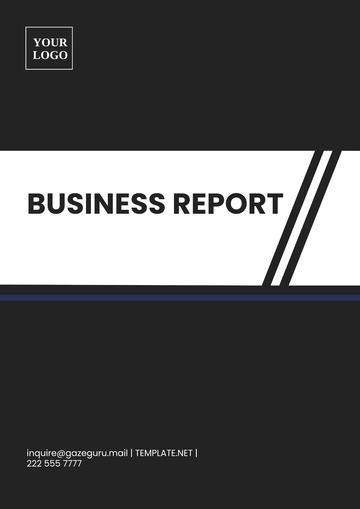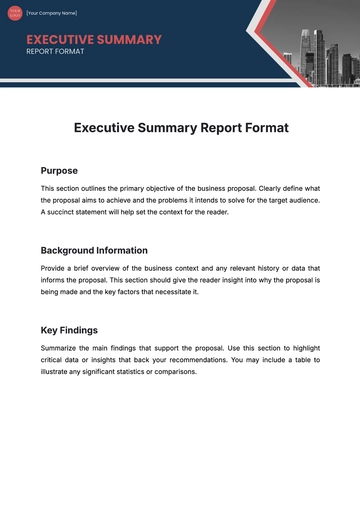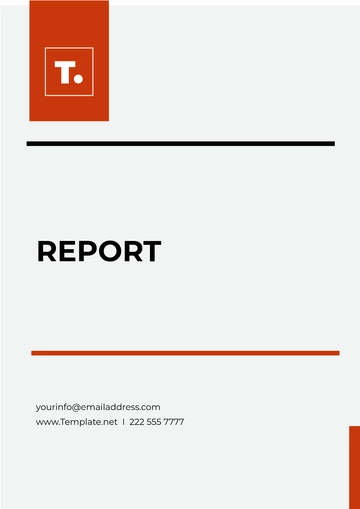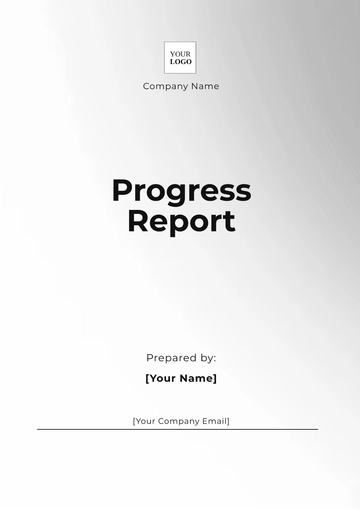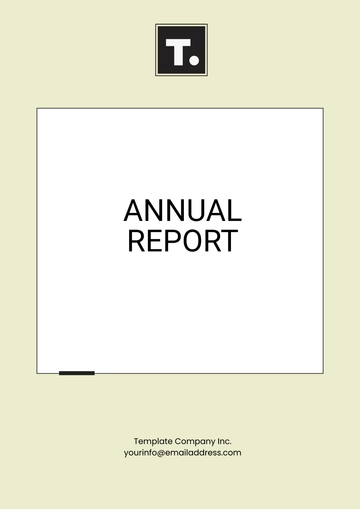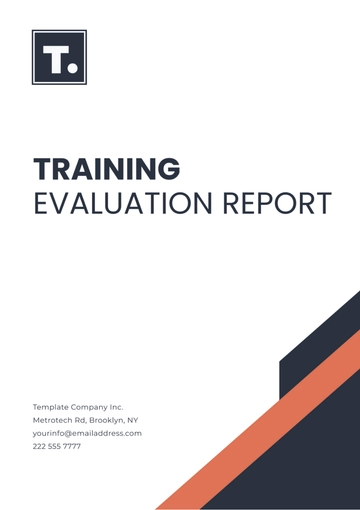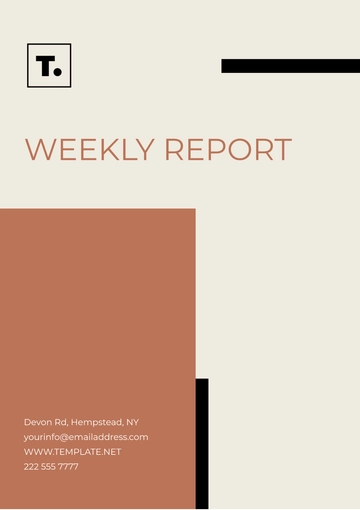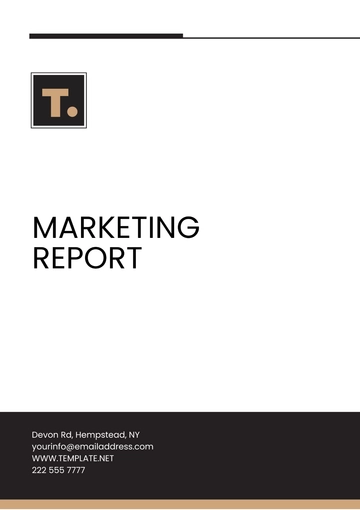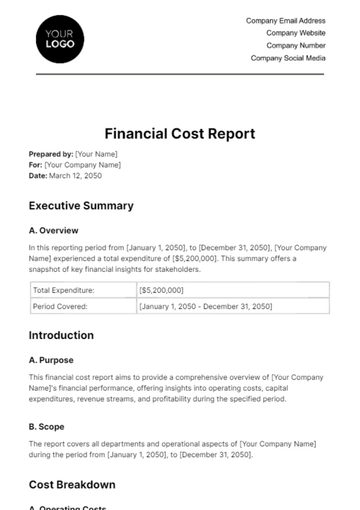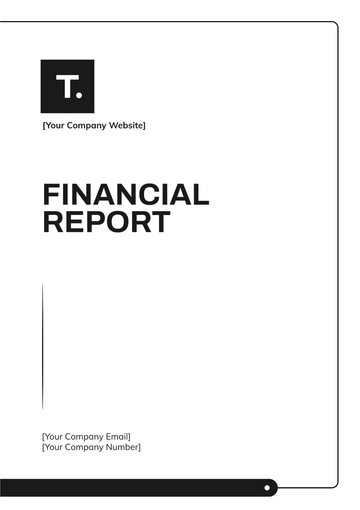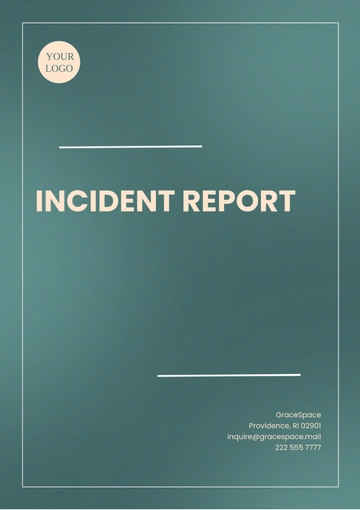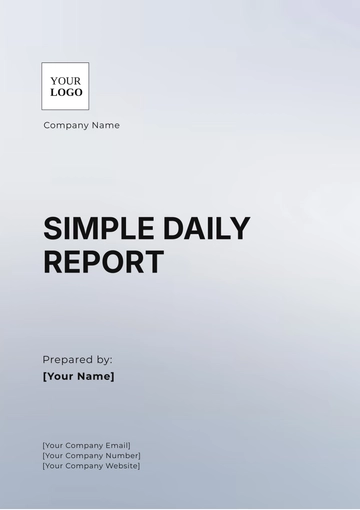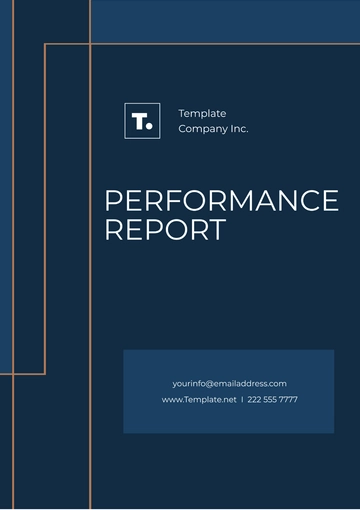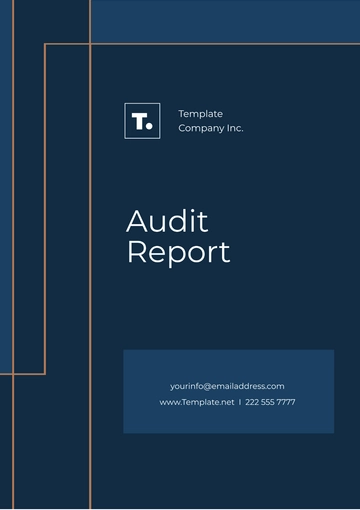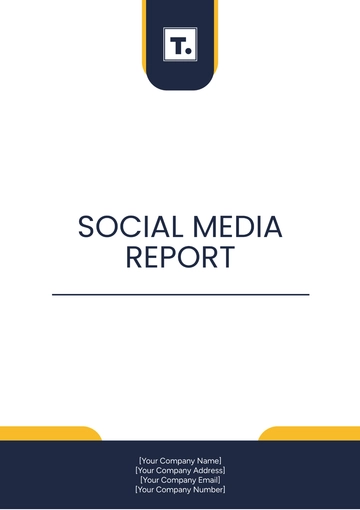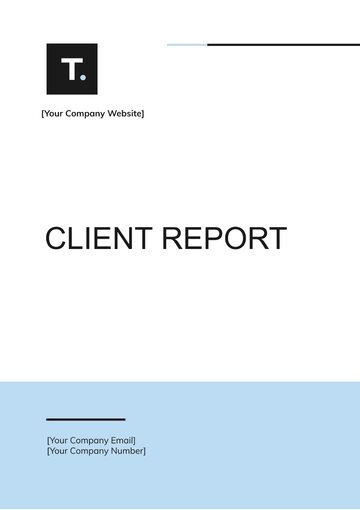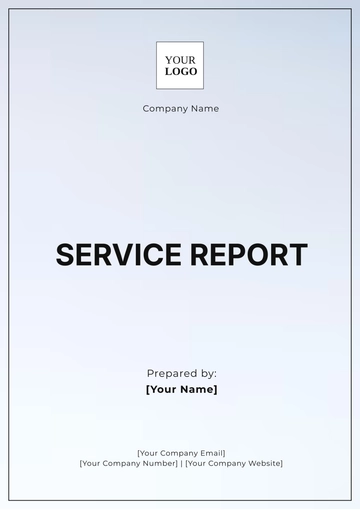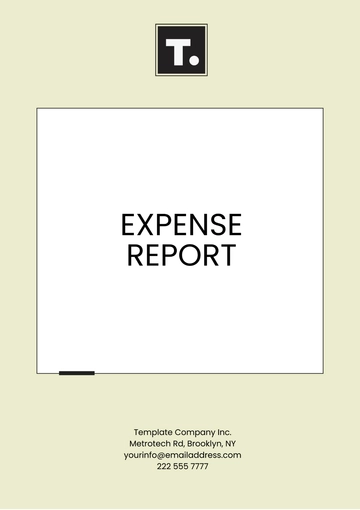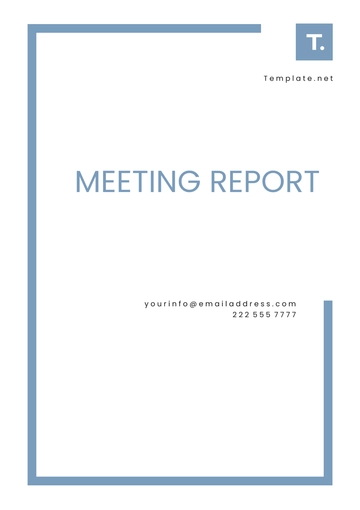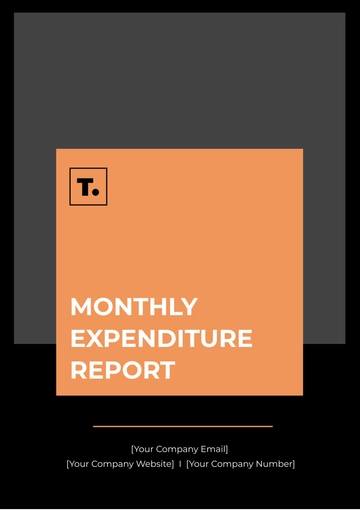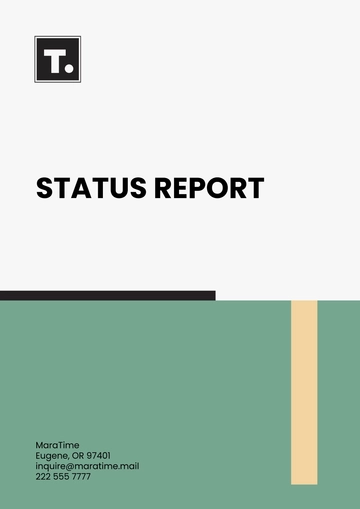Free Project Management Report
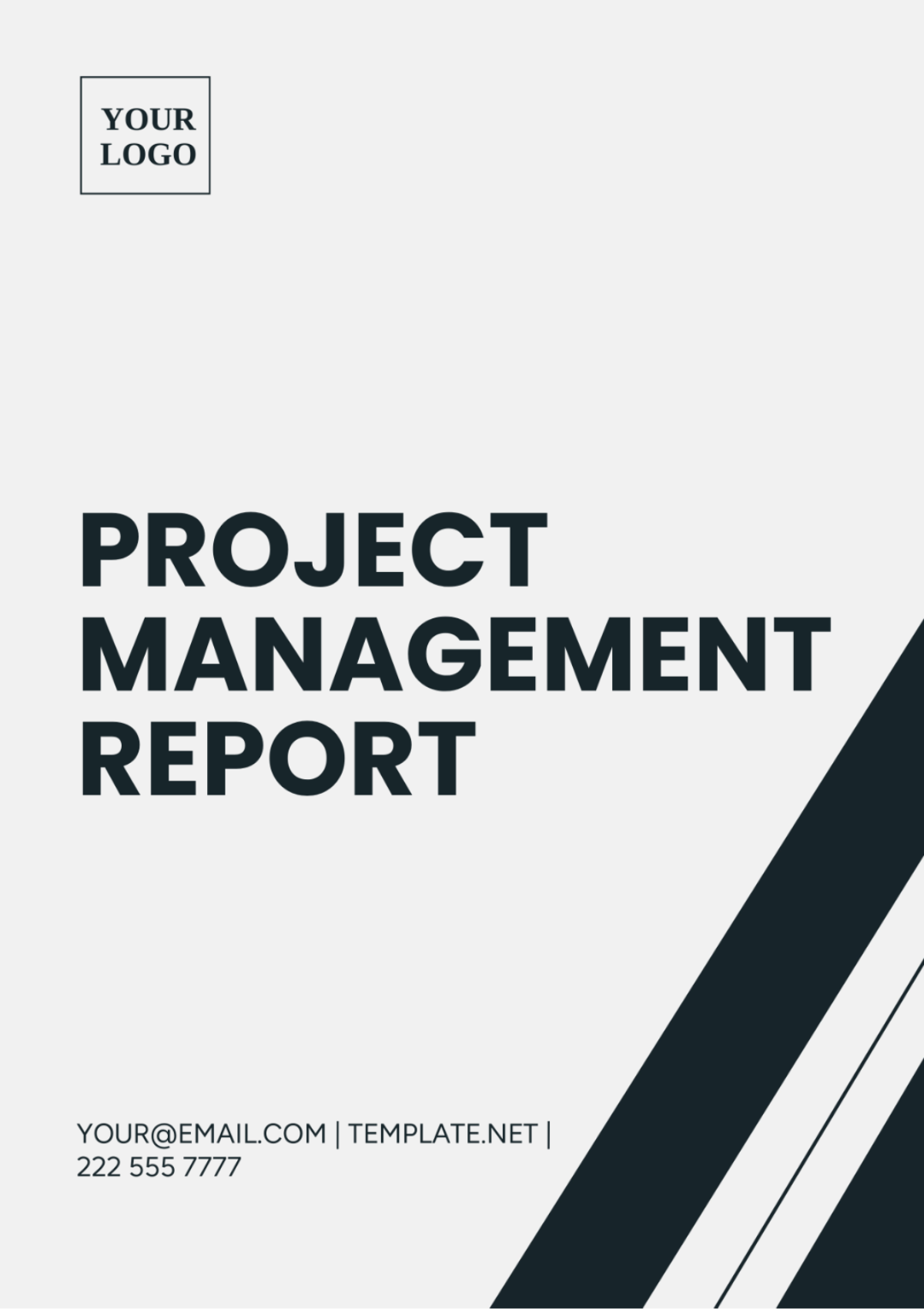
Prepared by: [YOUR NAME]
Company: [YOUR COMPANY NAME]
Date : [CURRENT DATE]
I. Executive Summary
This section offers a succinct summary of the current project status at [YOUR COMPANY NAME]. It captures the essential milestones achieved, details the primary issues presently affecting the project, and provides forecasts about the next phases. This summary is intended to give stakeholders a quick snapshot of the project's health and trajectory, highlighting any critical alerts that may require immediate attention.
II. Project Information
Project Name: [PROJECT NAME]
Project Manager: [PROJECT MANAGER'S NAME]
Start Date: [START DATE]
Expected Completion Date: [EXPECTED COMPLETION DATE]
Current Status: [CURRENT STATUS]
Budget: [BUDGET INFORMATION]
This section outlines the basic information regarding the project, establishing a framework for the detailed analysis that follows. It includes the project’s timeline, financials, and managerial oversight, providing a foundation for evaluating progress against established benchmarks.
III. Objectives and Scope
Project Objectives: Clearly outlines the primary goals the project aims to achieve, aligned with the strategic interests of [YOUR COMPANY NAME].
Project Scope: Defines the limits of the project, detailing what is included and what is excluded, ensuring all stakeholders have a unified understanding of the project’s boundaries and deliverables.
This section is crucial for aligning the project team and stakeholders' expectations and serves as a reference point for project deliverables and decision-making processes.
IV. Progress Overview
Milestones: Compares planned versus achieved milestones, providing insight into the project's adherence to its timeline.
Schedule: Analyses the adherence to the planned project timeline, highlighting any deviations and their implications.
Budget: Reports on current expenditure compared to the budget, noting any variances and their reasons.
This overview is essential for tracking the project's health and promptly identifying areas where corrective actions may be necessary.
V. Resource Allocation
Staffing: Describes the current team structure, any recent staffing changes, and how these impact project delivery.
Materials and Tools: Summarizes the resources utilized, focusing on the efficiency and effectiveness of material and tool allocations.
Resource management is key to project success, and this section evaluates whether the project has adequate resources to meet its objectives or if adjustments are necessary.
VI. Risks and Issues
Identified Risks: Lists potential risks, assessing their likelihood and potential impact on the project.
Current Issues: Enumerates ongoing issues, their effects on project deliverables, and the strategies in place to manage them.
Mitigation Strategies: Discusses the approaches taken to mitigate risks and resolve issues, emphasizing proactive management and contingency planning.
This section is critical for risk management, ensuring that all potential and actual obstacles are clearly understood and appropriately addressed.
VII. Achievements and Highlights
Key Achievements: Details the major successes and milestones achieved during the reporting period, underscoring positive developments.
Team Member Spotlight: Showcases outstanding contributions from individual team members, fostering a culture of recognition and motivation.
Celebrating achievements helps maintain team morale and motivation, crucial for the ongoing success of the project.
VIII. Challenges and Solutions
Encountered Challenges: Discusses specific challenges encountered, providing context about their impact on the project.
Adopted Solutions: Describes the solutions implemented to overcome these challenges, showcasing the team's adaptability and problem-solving capabilities.
This section helps document the project’s adaptive measures and serves as a learning tool for future projects.
IX. Next Steps and Future Plans
Immediate Actions: Outlines the actions planned for the next reporting period, preparing the team for upcoming tasks.
Long-Term Plans: Provides a forward-looking perspective on the plans for the remainder of the project, aligning with the overall project goals.
Planning is essential for maintaining project momentum and ensuring that all team members are aligned with the project’s long-term objectives.
X. Appendices
A. Detailed Financial Reports: Offers comprehensive insights into the project's financial health.
B. Gantt Charts/Project Timelines: Provides visual aids for tracking project progress against time.
C. Meeting Minutes and Communication Logs: Documents critical decisions and stakeholder communications, ensuring transparency and accountability.
These supplementary documents provide detailed data and evidence to support the contents of the report, enhancing its utility and reliability.
XI. Conclusion
This section synthesizes the insights presented, reiterating the project’s overall health and pinpointing any immediate decisions or issues that require attention. It reinforces the commitment of [YOUR COMPANY NAME] to achieving the goals of [PROJECT NAME], ensuring that the project remains on track to meet its objectives.
- 100% Customizable, free editor
- Access 1 Million+ Templates, photo’s & graphics
- Download or share as a template
- Click and replace photos, graphics, text, backgrounds
- Resize, crop, AI write & more
- Access advanced editor
Looking to streamline your project management process? Look no further than the Project Management Report Template from Template.net. This editable and customizable template is perfect for organizing your project data efficiently. Plus, it's seamlessly editable in our Ai Editor Tool, ensuring effortless customization to suit your unique needs.
You may also like
- Sales Report
- Daily Report
- Project Report
- Business Report
- Weekly Report
- Incident Report
- Annual Report
- Report Layout
- Report Design
- Progress Report
- Marketing Report
- Company Report
- Monthly Report
- Audit Report
- Status Report
- School Report
- Reports Hr
- Management Report
- Project Status Report
- Handover Report
- Health And Safety Report
- Restaurant Report
- Construction Report
- Research Report
- Evaluation Report
- Investigation Report
- Employee Report
- Advertising Report
- Weekly Status Report
- Project Management Report
- Finance Report
- Service Report
- Technical Report
- Meeting Report
- Quarterly Report
- Inspection Report
- Medical Report
- Test Report
- Summary Report
- Inventory Report
- Valuation Report
- Operations Report
- Payroll Report
- Training Report
- Job Report
- Case Report
- Performance Report
- Board Report
- Internal Audit Report
- Student Report
- Monthly Management Report
- Small Business Report
- Accident Report
- Call Center Report
- Activity Report
- IT and Software Report
- Internship Report
- Visit Report
- Product Report
- Book Report
- Property Report
- Recruitment Report
- University Report
- Event Report
- SEO Report
- Conference Report
- Narrative Report
- Nursing Home Report
- Preschool Report
- Call Report
- Customer Report
- Employee Incident Report
- Accomplishment Report
- Social Media Report
- Work From Home Report
- Security Report
- Damage Report
- Quality Report
- Internal Report
- Nurse Report
- Real Estate Report
- Hotel Report
- Equipment Report
- Credit Report
- Field Report
- Non Profit Report
- Maintenance Report
- News Report
- Survey Report
- Executive Report
- Law Firm Report
- Advertising Agency Report
- Interior Design Report
- Travel Agency Report
- Stock Report
- Salon Report
- Bug Report
- Workplace Report
- Action Report
- Investor Report
- Cleaning Services Report
- Consulting Report
- Freelancer Report
- Site Visit Report
- Trip Report
- Classroom Observation Report
- Vehicle Report
- Final Report
- Software Report

